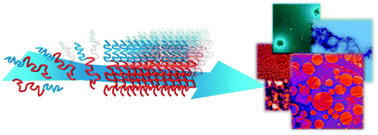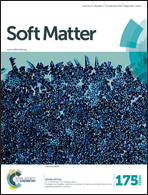Comparison of methods for the fabrication and the characterization of polymer self-assemblies: what are the important parameters?†
Abstract
The ability to self-assemble was evaluated for a large variety of amphiphilic block copolymers, including poly(ethyleneoxide-b-ε-caprolactone), poly(ethyleneoxide-b-D,L-lactide), poly(ethyleneoxide-b-styrene), poly(ethyleneoxide-b-butadiene) and poly(ethyleneoxide-b-methylmethacrylate). Different methods of formation are discussed, such as cosolvent addition, film hydration or electroformation. The influence of experimental parameters and macromolecular structures on the size and morphology of the final self-assembled structures is investigated and critically compared with the literature. The same process is carried out regarding the characterization of these structures. This analysis demonstrates the great care that should be taken when dealing with such polymeric assemblies. If the morphology of such assemblies can be predicted to some extent by macromolecular parameters like the hydrophilic/hydrophobic balance, those parameters cannot be considered as universal. In addition, external experimental parameters (methods of preparation, use of co-solvent, …) appeared as critical key parameters to obtain a good control over the final structure of such objects, which are very often not at thermodynamic equilibrium but kinetically frozen. A principal component analysis is also proposed, in order to examine the important parameters for forming the self-assemblies. Here again, the hydrophilic/hydrophobic fraction is identified as an important parameter.


 Please wait while we load your content...
Please wait while we load your content...